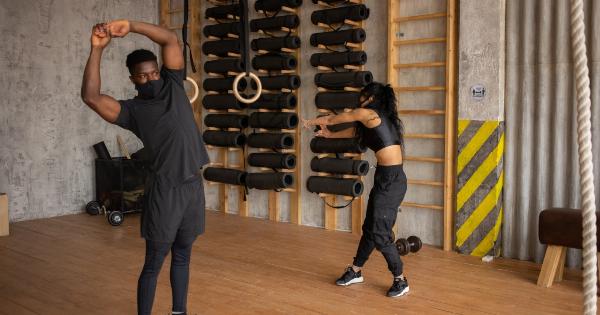Gymnastics is an excellent form of physical activity that involves high-intensity exercises that can help regulate blood sugar levels.
Insulin resistance, which is a condition where the body’s cells become less sensitive to insulin, can lead to type 2 diabetes. This condition can develop due to various reasons such as genetics, obesity, and physical inactivity.
While medication can be prescribed to treat insulin resistance, regular physical activity, including gymnastics, can be an effective non-pharmacological opportunity to manage insulin resistance conditions.
What is Insulin Resistance?
Insulin is a hormone produced by the pancreas that helps regulate glucose levels in the blood.
Insulin resistance occurs when the body’s cells become resistant to insulin, leading to an increase in blood sugar levels as the body is unable to regulate glucose efficiently. Insulin resistance can eventually lead to the development of type 2 diabetes and cardiovascular diseases.
How Does Gymnastics Help Insulin Resistance?
Gymnastics is an excellent form of physical activity that involves high-intensity exercises that promote cardiovascular fitness, muscle strength, flexibility, and balance.
Regular gymnastics training can help individuals manage their insulin resistance condition in several ways:.
Helps in Losing Weight:
Obesity can contribute to the development of insulin resistance. Regular gymnastics exercises can help bodyweight regulation, which can decrease obesity. Losing weight can help improve insulin sensitivity and manage insulin resistance conditions.
Improves Glucose Uptake:
Gymnastics training improves glucose uptake by the body’s muscles, which helps regulate blood sugar levels. This happens because gymnastics workouts use up glucose through exercise, resulting in a decreased need for insulin to be produced.
Reduces Stress:
Stress can lead to the development of insulin resistance. Regular gymnastics training can help reduce stress levels, which in turn can improve insulin sensitivity.
While exercising, the body releases endorphins, which produce feelings of happiness and relaxation.
Enhances Insulin Regulation:
Gymnastics exercise can improve insulin sensitivity by increasing the number of insulin receptors in the body’s cells.
Insulin receptors are responsible for glucose uptake by the cells, and more insulin receptors mean improved glucose uptake and regulation.
Improves Cardiovascular Fitness:
Gymnastic exercises are high-intensity workouts that can help improve cardiovascular fitness, which has a significant impact on regulating insulin resistance.
Cardiovascular fitness exercises can reduce body fat, improve the body’s ability to use insulin, and control blood sugar levels, also reducing the risk of developing insulin resistance.
Other Physical Activities and Insulin Resistance:
Gymnastics is not the only fantastic physical activity that can help manage insulin resistance.
Other exercises such as walking, running, swimming, and cycling can help improve insulin sensitivity and reduce the risk of developing insulin resistance and type 2 diabetes. A combination of different exercises that include cardiovascular fitness and strength training is vital for managing insulin resistance. Moreover, it is essential consult with doctor or health professionals before starting any workout program.
The Importance of Diet:
Gymnastics sessions are crucial in managing insulin resistance, but a proper diet can help support the positive results of regular physical activity. Consider reducing the intake of sugar, processed carbohydrates, and fatty foods.
Instead, focus on lean proteins, whole-grain bread and cereals, and plenty of fruits and vegetables. Also, consider eating healthy fats such as nuts, avocados, and fatty fish.
In Conclusion:
Insulin resistance is a condition that can lead to various physical and mental health complications.
Regular gymnastics training can help manage insulin resistance conditions by improving glucose uptake, reducing body weight, reducing stress levels, improving cardiovascular fitness, and enhancing insulin regulation. Combining gymnastics with proper diet has also shown positive results in managing insulin resistance conditions effectively.




























